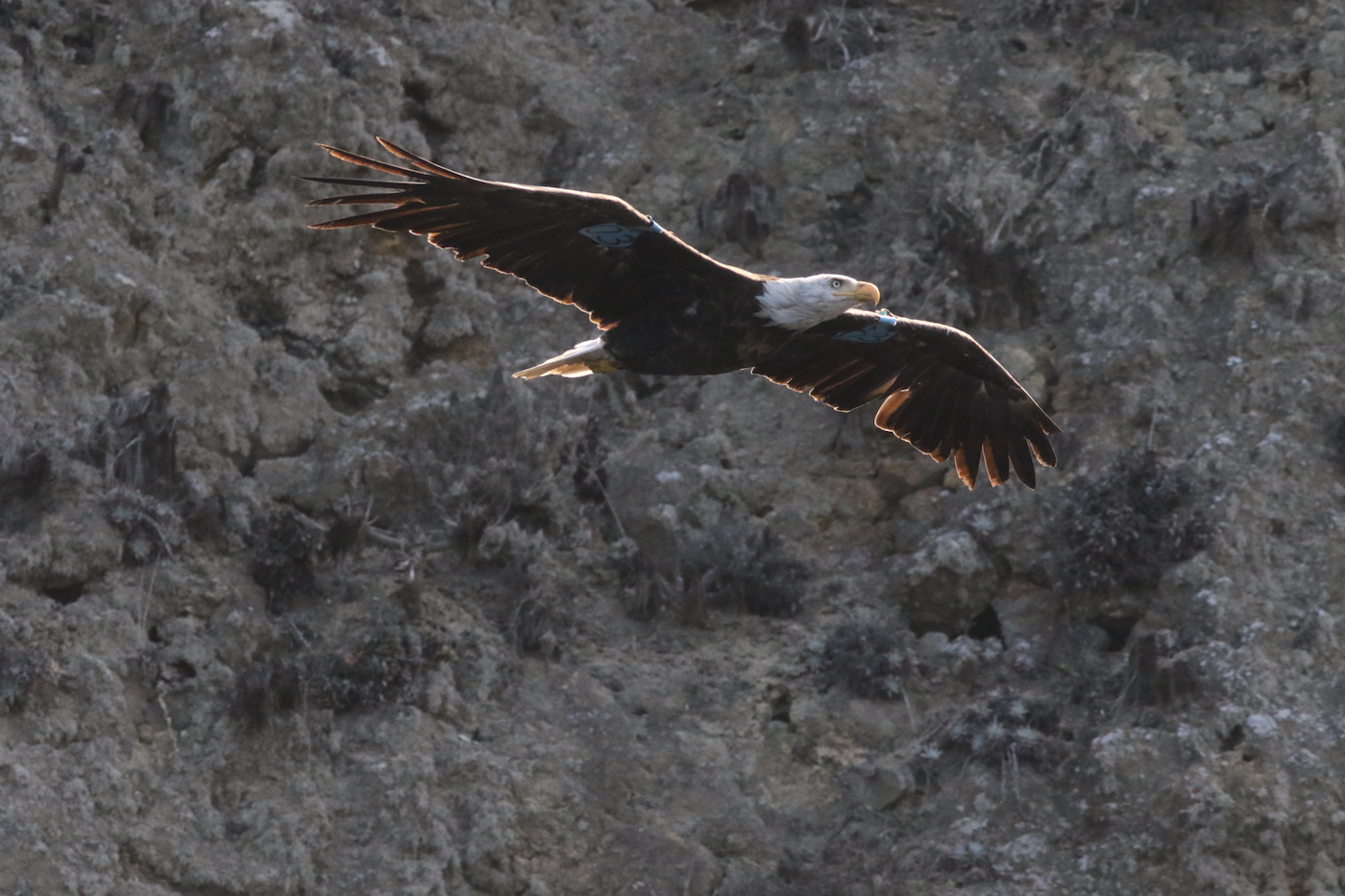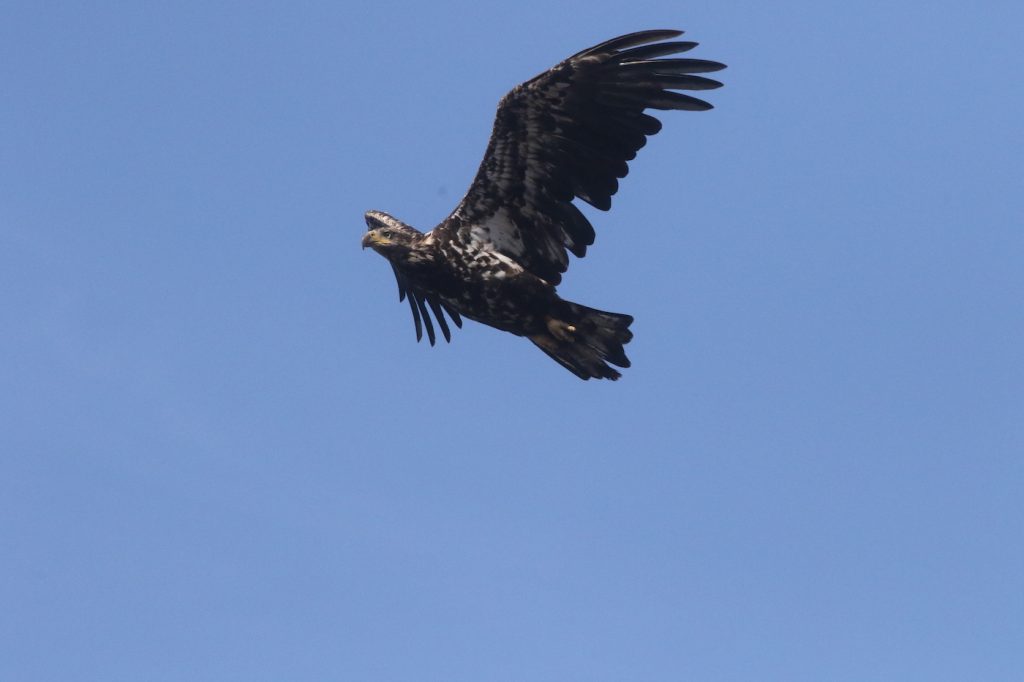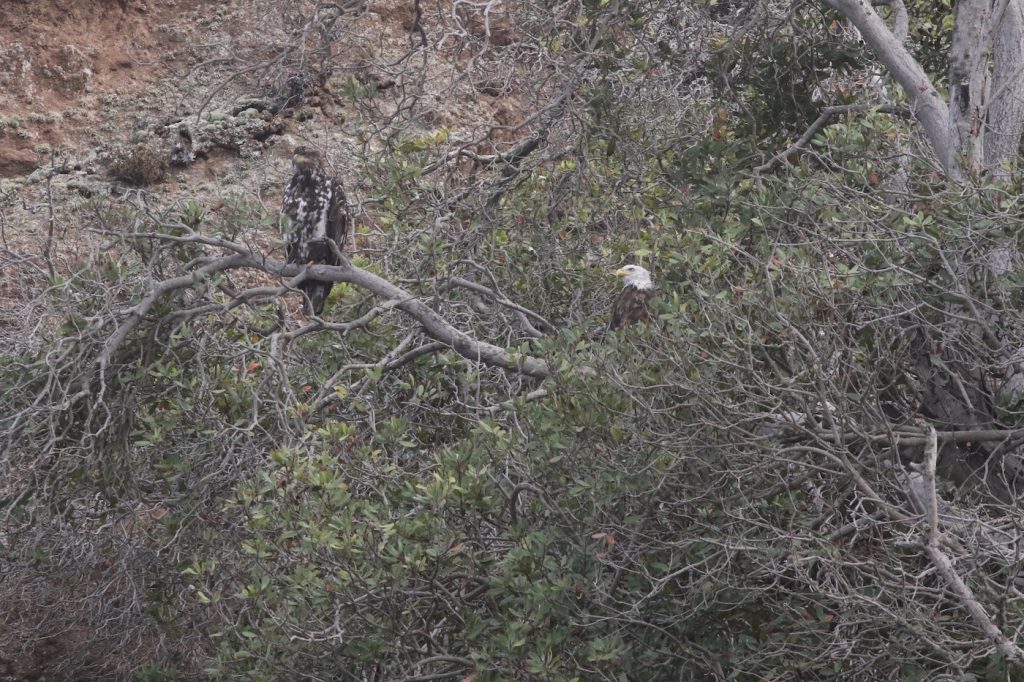A-03 Has Arrived: Bald Eagles on the Channel Islands National Park

The manic cacophony of western gulls was too frantic to pass up, diverting my attention span toward drama-filled blue skies as a keystone species buzzed a prominent, weather-beaten seabird rookery.
As I kayaked toward the commotion, I soon realized I was in the presence of an apex predator wreaking havoc over Scorpion Rock near the southeast end of Santa Cruz Island, part of the Channel Islands National Park.
The lone bald eagle possessed antagonistic tendencies as it dive-bombed sea guano-covered Scorpion Rock for what seemed to be for the pure joy of it. I could see its steely gaze as it sent at least 100 gulls into a dizzying tizzy as they swarmed the steady glide of this majestic bald eagle.
When the eagle had satisfied its craving for disruption, it soared back to a small grove of toyon and island oak trees overlooking a tranquil cove just southeast of Little Scorpion Anchorage.
Later that afternoon I paddled to that same shimmering cove and discovered the same adult bald eagle roosting in that secluded grove. Perched next to it was a juvenile bald eagle the same size as the adult, yet still adorned in its mottled feathers. The mature bald eagle had a blue tag on its wings signifying that it was a Channel Islands National Park bird. The juvenile possessed an orange band barely visible on its lower left leg.
“Male A-03 hatched at the Fraser Point nest on western Santa Cruz in 2017,” said Dr. Peter Sharpe, a wildlife biologist with the Institute for Wildlife Studies (IWS), speaking on the blue tagged bald eagle. “We’ll have to keep an eye on the Scorpion area next year.”

Sharpe has been instrumental in returning bald eagles back to the Northern Channel Islands (NCI), those four islands — Anacapa, Santa Cruz, Santa Rosa, and San Miguel — making up four of the five isles in the National Park.
After about a 50-year absence due to DDT pesticides, the recovery of bald eagles to the northern chain began in 2002-2006. Those pesticides forced bald eagles to lay thin-shelled eggs that could not survive the incubation process, generations of eagles lost across the chain.
During those five years of recovery, 12 bald eaglets at eight weeks old were placed in hack towers each year over that span. At that age they were not ready to fly, but biologists wanted them to feel the ocean air in their wings and have looks at their old historic habitat, preparing them for life on the islands. After another four weeks, the doors were opened, and the eagles flew when they were ready. It’s been almost 20 years since that recovery began, this keystone species making an indelible mark on a fragile island biome.
A-03 isn’t alone though within the Scorpion Anchorage region. Keeping company with this four-year-old bald eagle is that juvenile or subadult eagle. Cloaked in mottled feathers, I’ve noticed it flying on its own, but also hanging out in that grove of trees with the adult near the southeast end of the most biodiverse islet off the California coast.

Currently there is no background on this impressive looking raptor. Two scenarios come to mind though for biologists.
“The subadult looks like it is still a year or two away from breeding, but maybe they’ll stick together,” explained Sharpe.
The other scenario revolves around the orange band on the juvenile’s lower left leg. Bald eagles are monogamous birds, and this subadult might be the offspring of A-03. The adult bird has not been seen with a mate, so it’s unclear what the relationship is.
“If it’s banded, then it’s obviously likely from another known nest on the island,” said Nathan Melling, also a biologist with IWS working with bald eagles on the Channel Islands. “If not, then it could be the offspring of 03 from an unknown nest in the area.”
In any event, bald eagles have made steady strides recovering across the craggy archipelago. Currently, there were 12 known breeding bald eagle pairs on the NCI in 2021, producing 14 fledglings. There are at least another 10 bald eagles that are young or non-breeding birds learning how things work on the chain. There are around 50 bald eagles in all on NCI.
As I sat in my kayak gazing up at A-03 preening on its lofty, volcanic crag, I waited patiently for it to take flight and extend its impressive wingspan over cobalt blue waters and a thick canopy of giant bladder kelp. Nearly 90 minutes later, it did just that. I followed it through my 300mm lens until it was a mere speck through my viewfinder, the ocean realm vital to its existence surrounding the islands.





